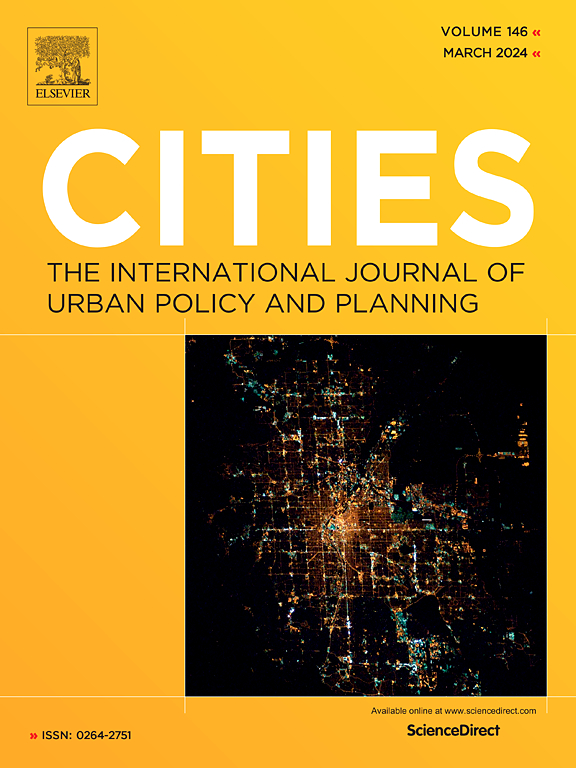15分钟后到?城市形态对邻近感知和公共空间使用的影响
IF 6.6
1区 经济学
Q1 URBAN STUDIES
引用次数: 0
摘要
本研究探讨了15分钟城市(15MC)模式在西欧城市大都市区的适用性,特别关注城市形态和公共空间设计在塑造居民观念和行为方面的作用。虽然现有的15MC研究主要采用定量方法-测量服务的接近度-但本研究采用定性视角。本研究的第一部分对巴黎、巴塞罗那和米兰主要在紧凑的城市环境中实施的以邻近为导向的计划与20世纪90年代罗马针对更庞大的城市环境实施的Centopiazze计划进行了比较分析。第二部分特别关注罗马的案例,分析了在不同社区和城市形态的Centopiazze项目下进行的七个公共空间干预。通过实地考察和原始调查来评估这些广场,以纳入居民的看法。研究结果表明,仅靠邻近性(即15分钟内的可达性)和服务的可用性不足以确保公共广场成为或被视为充满活力的中心社区空间。相反,在紧凑的城市形态中嵌入精心设计的公共空间有助于增强对当地中心地位的感知,并有助于加强邻近体验。本研究旨在通过提供强调空间形式和用户感知重要性的新视角,丰富15MC的学术论述,为支持在欧洲背景下促进大都市规模的邻近性的规划策略提供见解。本文章由计算机程序翻译,如有差异,请以英文原文为准。
There in 15 minutes? The impact of urban morphology on the perception of proximity and the use of public space
This study explores the applicability of the 15-minute city (15MC) model within the metropolitan areas of western European cities, with a particular focus on the role of urban form and public space design in shaping residents' perceptions and behaviors. While existing research on the 15MC has primarily taken a quantitative approach—measuring proximity to services—this study adopts a qualitative perspective. The first part of the research presents a comparative analysis of proximity-oriented initiatives in Paris, Barcelona, and Milan—primarily implemented in compact urban contexts—contrasted with Rome's 1990s Centopiazze program, which targeted more sprawling urban environments. The second part focuses specifically on the case of Rome, analyzing seven public space interventions carried out under the Centopiazze program across different neighborhoods and urban morphologies. These squares were evaluated through site visits and original surveys to incorporate residents' perceptions. Findings indicate that proximity—understood as access within a 15-minute radius—and availability of services alone are not sufficient to ensure that a public square becomes, or is perceived as, a vibrant and central neighborhood space. Rather, well-designed public spaces embedded within compact urban morphologies contribute to a stronger perception of local centrality and help reinforce the experience of proximity. This study seeks to enrich academic discourse on the 15MC by offering a new perspective that highlights the importance of spatial form and user perception, providing insights to support planning strategies that foster proximity at the metropolitan scale within the European context.
求助全文
通过发布文献求助,成功后即可免费获取论文全文。
去求助
来源期刊

Cities
URBAN STUDIES-
CiteScore
11.20
自引率
9.00%
发文量
517
期刊介绍:
Cities offers a comprehensive range of articles on all aspects of urban policy. It provides an international and interdisciplinary platform for the exchange of ideas and information between urban planners and policy makers from national and local government, non-government organizations, academia and consultancy. The primary aims of the journal are to analyse and assess past and present urban development and management as a reflection of effective, ineffective and non-existent planning policies; and the promotion of the implementation of appropriate urban policies in both the developed and the developing world.
 求助内容:
求助内容: 应助结果提醒方式:
应助结果提醒方式:


